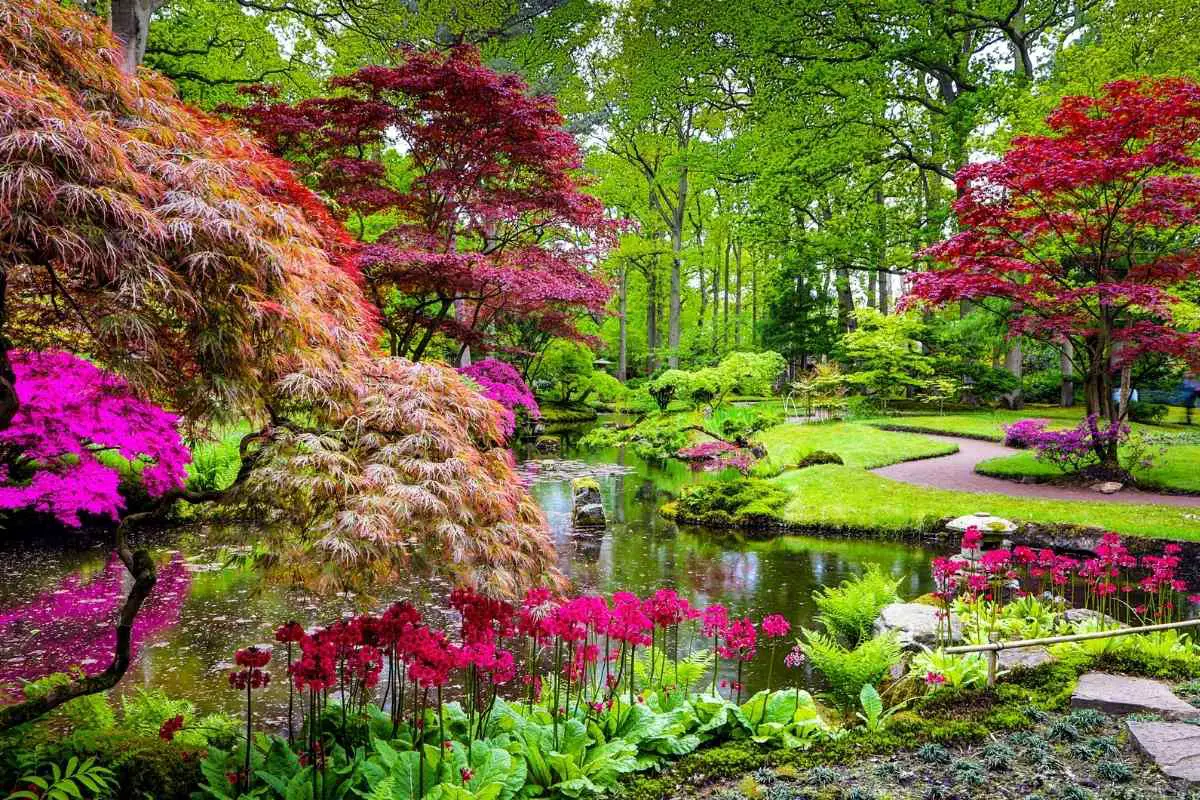A Japanese garden is an excellent way of creating a calming atmosphere in your backyard.
Japanese-inspired gardens use minimal color palettes with more diverse varieties of plants, from mosses to trees.
Trees are an excellent way of adding shade to your backyard and giving plants that don’t require as much sunlight some protection from the sun’s rays, but you will want to pick trees that fit with your Japanese garden. Quince fruit trees, cherry blossoms, Japanese maples, Black Pines, and Styrax trees are great choices.
Please keep reading to learn about the different qualities of each tree, what you need to care for them correctly, and what other species they grow best with.
Quince Fruit Trees
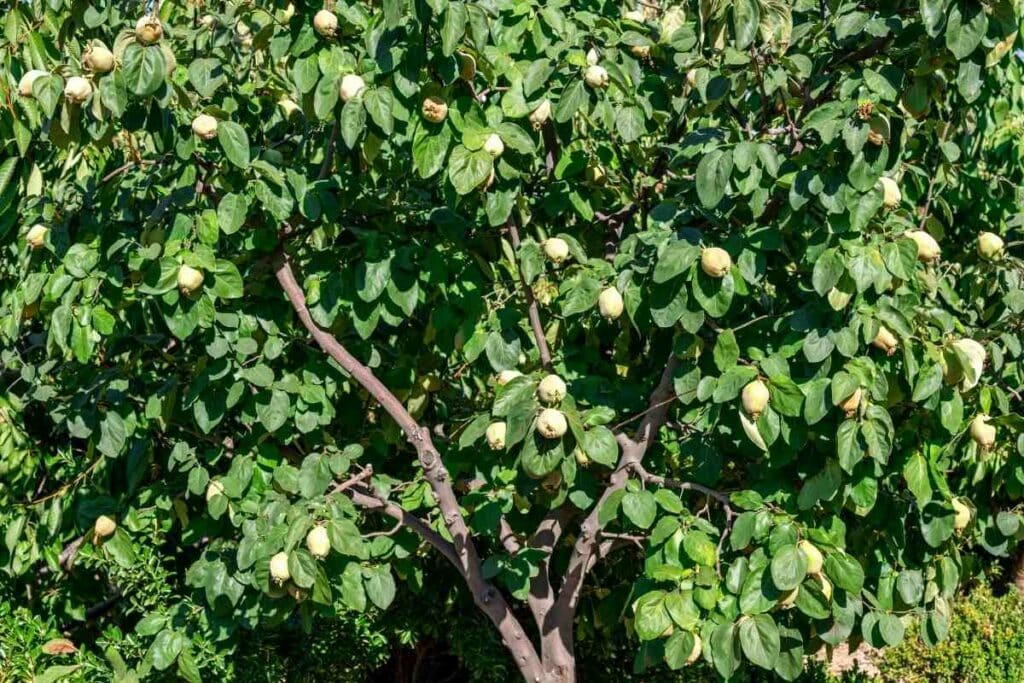
Quince fruit trees are a lot like bonsai trees but much larger. They have beautiful pink and white flowers that bloom in the Spring and golden fruit that grows in the Fall.
Fruit and Blossoms
Quince fruit trees produce fruit somewhere between an apple and a pear with a golden-green color when ripe. These fruits have a citrusy smell and have a sweet flavor when cooked into jams, jellies and pies.
Before the fruit grows, the tree is full of pink and white blossoms. Quince trees are nontoxic to humans as well as pets and horses.
The flowers grow in May or early Spring, and the fruit becomes ripe in the Fall. The flowers attract pollinators like bees to your garden, which benefits your Quince plants and the other plant species.
When and where to plant
Quince trees are also hardy trees that like full sunlight and well-drained, moist soil and planting should occur in March and/or April, so they have the Spring to grow and establish.
They have a south-facing, west-facing aspect and grow to an average size of 13 feet in height and spread.
How to care for Cherry Blossoms
Quince trees are very low maintenance when watering since they can withstand drought conditions for short periods.
They are difficult to overwater, so if you ever worry if they are getting enough water, you can go ahead and water them.
Good companion plants
Quince trees grow well with:
- Forsythia
- Flowering almond
- Spirea
- Mock orange
- Pyracantha
Cherry Blossom Trees
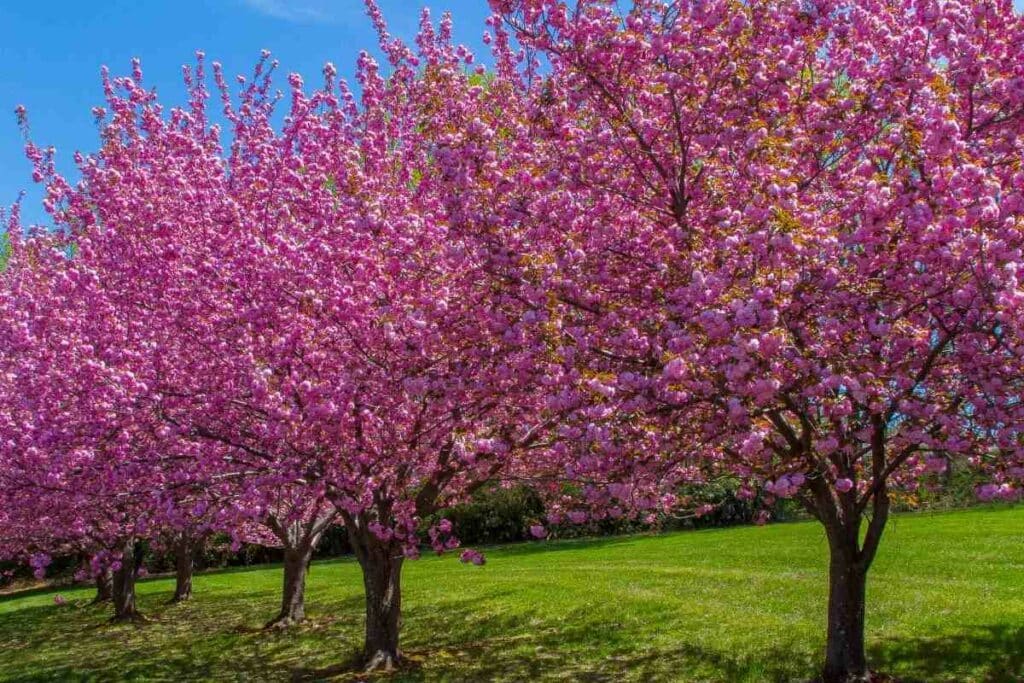
Cherry Blossoms are some of the most well-known trees from Japan. Japan has festivals every year in March and April when the trees bloom their pink and white flowers.
Toyko cherry blossom trees are among the most popular.
Fruit and blossoms
Cherry blossom trees grow fragrant white flowers in the Spring, which turn into tiny black fruit closer to the fall season. Their leaves start as a rich green that later turns into brilliant shades of orange and red in the Fall.
These flowers will start blooming in March and April and will not attract pollinators and other wildlife.
However, Cherry Blossoms can be toxic to cats, dogs, and horses, so keep that in mind before you decide to add them to your garden.
Where and when to plant
Cherry blossoms prefer a south-facing, west-facing aspect and grow to an average size of about 39 feet high with a spread of about 29 feet.
They grow in full sunlight with well-drained, moist soil—mulch yearly with garden compost or well-rotted manure. Planting should take place in the Fall season.
How to care for and prune Cherry Blossoms
Cherry Blossoms only need moderate watering once a week for about 30 minutes when they are still establishing, but once they are, they only need water every two to three weeks.
Pruning should occur in the winter while the tree is dormant and only after at least five years of growth. Remove any dead branches, and you can do minimal cutting for shape.
Good companion plants
Cherry blossoms grow well with:
- Marigolds
- Comfrey
- Chives
- Daisies
- Spring bulbs like tulips, daffodils, hyacinths, irises, allium and crocus
- Nasturtium
- Sweet Alyssum
- Lupine and white clover
- Lavender and rosemary
Japanese Maple Trees

Japanese Maple trees come with all kinds of leaf colors and shapes that will turn into glorious shades come the Fall season. They also benefit from underplants like shrubs or hakonechloa.
When and where to plant
Planting your Japanese Maples in the Fall is an excellent way of letting the plant establish roots while the rest of the plant is dormant.
However, you can also plant them during the Spring as long as there’s no threat of frost to damage the new plant.
You will want to plant them in a location protected from any strong wind that has well-drained, moist soil with organic materials.
No part of Japanese Maples is poisonous to humans or pets.
How to care and prune Japanese Maples
Japanese Maples need watering regularly, and you should avoid periods of extremes like overwatering and dry spells.
After the tree establishes its roots, it will be better able to withstand changes in conditions. It would be best if you refrained from using fertilizers until their seconds growing season and then only fertilize in early Spring before May.
Japanese Maples need almost no pruning as long as you are interested in their natural shape. If you want a more airy look, then you can thin out the branches over time.
The best time to prune the branches is in July and August since there won’t be any sap oozing out of the branches.
Good companion plants
Japanese Maples grow well with:
- Ginkgos
- Dawn redwoods
- Conifers
- Sedum
- Dianthus
- Azaleas
Black Pine Trees
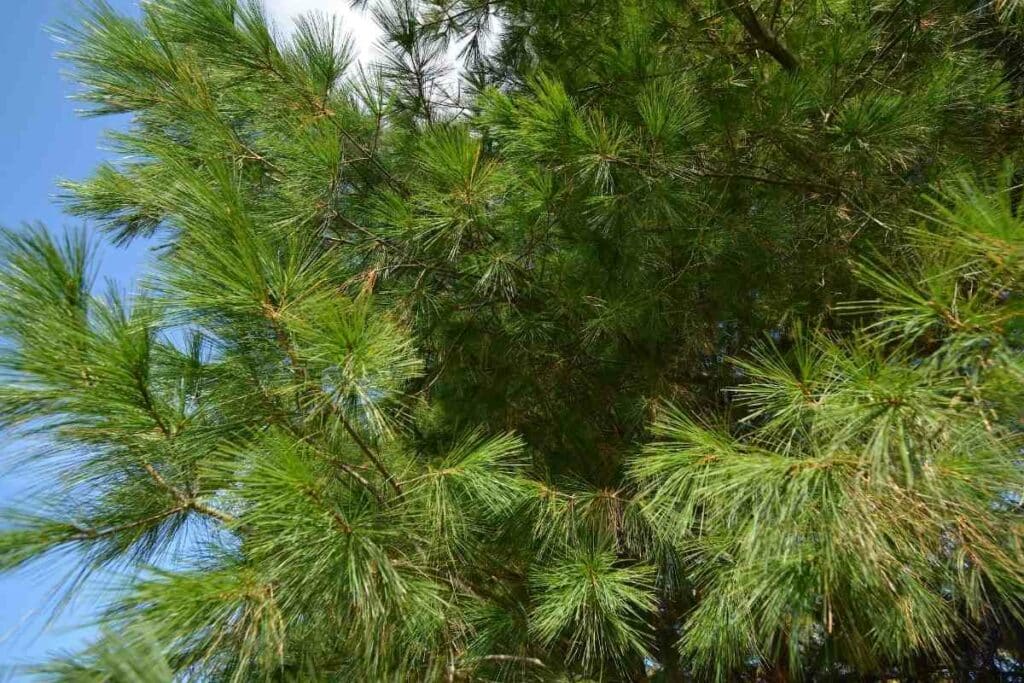
Black pines are a great evergreen addition to your Japanese garden. After they fall to the ground, their needles acidify the soil, which helps plants that prefer more acidic soils like azaleas.
However, if you’re looking for a neat backyard, maybe the Black pine isn’t for you as it will regularly shed its needles.
When and where to plant
Black pines grow all year round, so they are hardier than some other trees on this list. They prefer full sunlight and sandy, silt soil.
Favouring soil with salt makes Black pines a good fit for properties near beaches. Black pines can grow up to 15 to 40 feet high and 20 to 35 feet in spread.
Black Pines are not toxic to humans or pets.
How to care and prune Black Pines
Black pines need watering at least once a week, especially in the first year of growth, but after the first year, they are better able to withstand harsher conditions.
Make sure your soil is well-drained, as Black Pines will not tolerate soggy soil. You may need to add fertilizer in the Spring to get the right mixture since they prefer acidic soil.
While Black Pines don’t mind humid conditions, they are sensitive to the cold. Their needles will turn brown and dry out if the temperature dips below ten degrees Fahrenheit regularly.
Good companion plants
Black pines grow well with:
- Red maple
- Juniper
- Forsythia
- Spruce
Styrax Trees
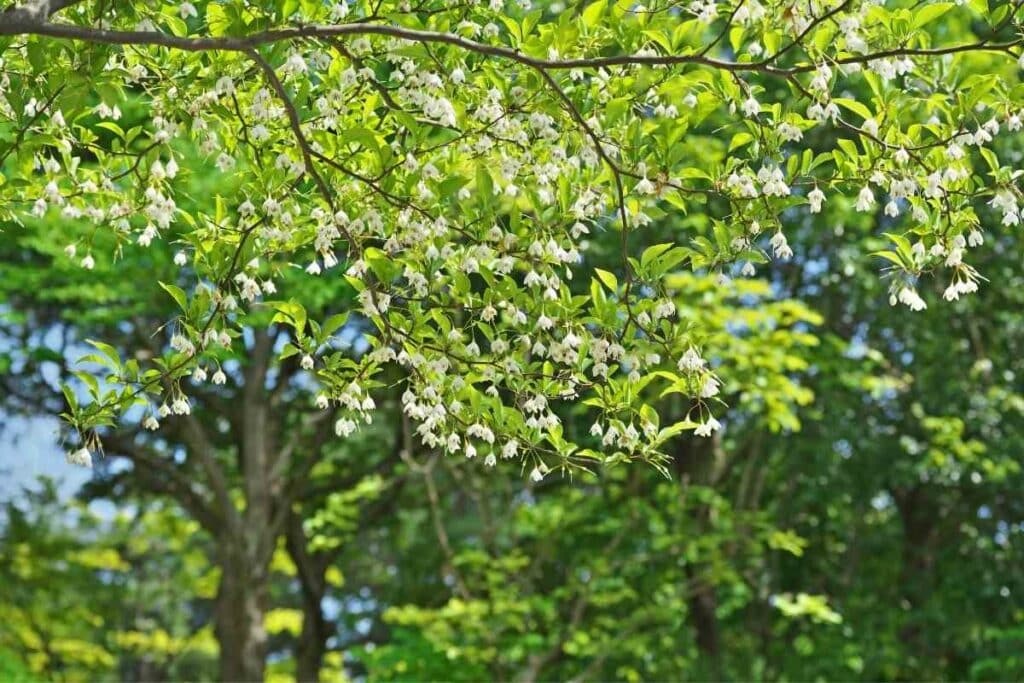
Styrax trees are native to Japan and have white, bell-shaped blossoms that bloom in the summer months. Its common name is the Japanese snowball tree because of its different flowers.
Blossoms and leaves
Styrax trees have broad, fan-shaped branches that make them thrive next to pounds or pathways that their branches can hang over.
Beautiful bell-shaped flowers grow from June to the end of August, with their pale green leaves turning a brilliant yellow shade in the fall season. Its flowers will grow from early June to the end of August.
Styrax trees are not toxic to humans or any pets.
When and where to plant
It would be best to plant Styrax trees either in March or in the early winter month to let their roots establish while the rest of the plant is dormant.
Styrax trees can grow in full sunlight or only partial light. If you live in a warmer climate, then planting Styrax in the shade is fine, but if there are colder conditions, you should consider growing it in direct sunlight.
Styrax trees like well-drained, acidic soil and have an east-facing, west-facing, and south-facing aspect and can grow to about 39 feet high with 26 feet spread.
How to care for and prune Styrax trees
You will need to prune its branches yearly to restrict their size. To learn more about the best method for pruning a Styrax tree, you can check out this article from SFGate.com.
Wating your Styrax trees regularly as they don’t like dry conditions but be careful not to overwater as they do not tolerate soggy soil.
Good companion plants
Styrax trees grow well with:
- Hydrangeas
- Lily of the valley shrub
- Lenten rose
- Mountain laurel
- Hosta
Final Thoughts
Adding trees to your Japanese garden is an excellent way of incorporating height levels and providing shade for the species that need it.
Planting trees that produce flowers can be a way of bringing more bees and other pollinators to your backyard so your plants can benefit from them.
Having more trees in your backyard can also benefit your soil as the leaves fall to the ground in the fall season and add organic materials that can be broken down and provide nutrients.
More than anything, they’re a fantastic way of bringing together the overall aesthetic of your Japanese garden-inspired backyard.
- Guide To Desert Plants: Types, Adaptations, And Landscaping Tips
- Philodendron Care, Varieties, And Aesthetic Home Arrangements
- Potato Bugs: Identification, Impact, And Control
- What Do Squirrels Eat? A Gardener’s Guide to Squirrel Diets
- Understanding Chipmunks In Your Garden: Behavior, Diet, And Tips For Gardeners
